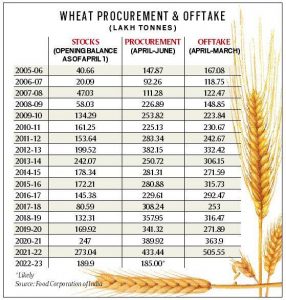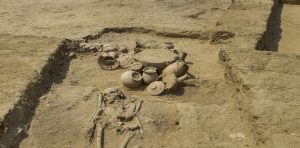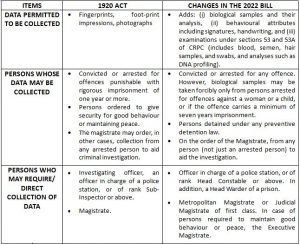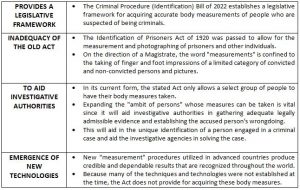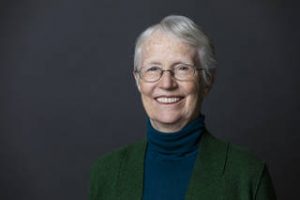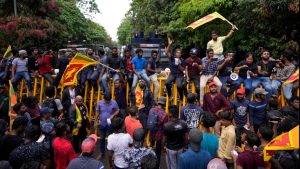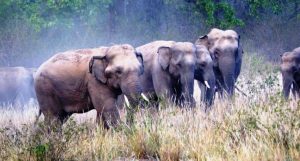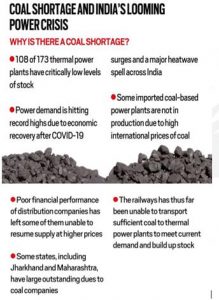THE CONTEXT: The Country Reports on Human Rights were released by the US Secretary of State on 12 April 2022. The report on India has flagged concerns over arbitrary arrests and detentions, extra-judicial killings, violence against religious minorities, curbs on free expression and media, including unjustified prosecution of journalists. This article primarily focuses on press freedom in India and concerns issues raised in the report.
THE REPORT: The report is prepared by the US Department of State and submitted each year to the US Congress it is retrospective in nature and contains a country-wise discussion of the state of the internationally recognised individual, civil, political, and worker rights, as set forth in the Universal Declaration of Human Rights and other international agreements.
KEY HIGHLIGHTS OF THE REPORT
ARBITRARY ARREST AND DETENTION: Indian law prohibits arbitrary arrest and detention but both occurred during the year, with police using “special security laws to postpone judicial reviews of arrests. Pre-trial detention was arbitrary and lengthy, sometimes even exceeding the duration of the sentence given to those convicted.
VIOLATIONS OF PRIVACY: Citing media reports on journalists being targeted for surveillance through the Pegasus malware, the report flagged violations of privacy by government authorities, including the use of technology to arbitrarily or unlawfully surveil or interfere with the privacy of individuals.
CURBS ON FREE EXPRESSION AND MEDIA: The report highlighted instances in which the government or actors considered close to the government allegedly pressured or harassed media outlets critical of the government, including through online trolling. It detailed the government’s order of February-2021 directing Twitter to block accounts of journalists covering protests against the three (later repealed) farm laws.
ON FREEDOM OF ASSOCIATION: The report highlighted the cases of Amnesty International India, whose assets were frozen by the Enforcement Directorate, and the suspension of the Foreign Contribution (Regulation) Act (FCRA) license of Commonwealth Human Rights Initiative (CHRI) for alleged violations.
THE REPORT AND THE PRESS FREEDOM IN INDIA
- The report systematically lists cases where freedom of the press was endangered by government and non-government actors.
- The report noted that international watchdogs including Freedom House and Human Rights Watch had also documented a downslide in India’s application of democratic rights for the media and an increase in continuous harassment.
- There were also cases, especially in states, of journalists being killed or targeted by vested interests due to their professional work, it says.
- In June 2021, a journalist for the newspaper Kampu Mail was killed by two gunmen in Uttar Pradesh, allegedly for his investigative reports into illegal sand mining.
- The UNESCO director-general Audrey Azoulay had also taken cognizance and asked authorities to end “gunpoint censorship”.
- The report also mentions the arrest of comedian Munawar Faruqui and four other persons for allegedly offending religious sentiments with jokes that he did not even deliver but planned to perform.
- The report also noted that the World Press Freedom Index 2021 by Reporters Without Borders (RSF) described India as “very dangerous for journalists” with the rank of 142 among 180 countries.
- Further, the report listed that government officials at both local and national levels were involved in “intimidating critical media outlets through physical harassment and attacks, pressuring owners, targeting sponsors, encouraging frivolous lawsuits, and in some areas blocking communication services, such as mobile telephones and the internet, and constraining freedom of movement”.
AN ANALYSIS OF THE REPORT
- Citing media reports on journalists being targeted for surveillance through the Pegasus malware, the report flagged violations of privacy by government authorities. The report was also critical of the government’s involvement in allegedly pressuring or harassing the media outlets critical of the government while noting that the government generally respected the right to freedom of expression.
- Though there are instances of the alleged government pressure on the media houses and even there have been circumstances that warrant courts cautioning the media about the manner of its reportage. However, the general view is that the public has a right to know and it is the duty of the media to disseminate the information. The court in various instances took cognizance of the media reports and directed the state machinery to do the needful.
- The USA is entitled to have views; India also posted its strongest repudiation against America for constantly pontificating on human rights and press freedom.
PRESS FREEDOM AND DEMOCRACY
MAKING GOVERNMENT ACCOUNTABLE: Free Media makes people question the decisions of the government and make it accountable. It conveys the people’s needs and desires to government bodies, making informed decisions and strengthening society as a result.
VOICE OF THE MARGINALISED: The free media by being the voice of the masses empowers them with the right to express opinions.
FREE EXCHANGE OF IDEAS: A free exchange of ideas, free exchange of information and knowledge, debating, and expression of different viewpoints are important for the smooth functioning of democracy. A free press can inform citizens of their leaders’ successes or failures.
FOURTH PILLAR OF DEMOCRACY: Due to these attributes, the Media can be rightly considered as the fourth pillar of democracy, the other three being legislature, executive, and judiciary.
THREATS TO FREEDOM OF PRESS
BIASED MEDIA: Corporate and political power has overwhelmed large sections of the media, both print and visual, which leads to vested interests and destroys freedom.
FAKE NEWS: The government’s pressure in the name of regulations, the bombardment of fake news, and the influence of social media are dangerous for the occupation.
PAID NEWS: Corruption-paid news, advertorials, and fake news are threats to free and unbiased media.
ATTACK AGAINST JOURNALISTS: The security of journalists is the biggest issue, killings, and assaults on Journalists covering sensitive issues are very common. Reports such as ‘Freedom in the World 2021 (Freedom House, US)’, ‘2020 Human Rights Report (US State Department)’, and ‘Autocratisation Goes Viral (V-Dem Institute, Sweden)’ have all highlighted the intimidation of journalists in India.
CENSORSHIP BY THE STATE:
- The political leaders encourage censorship of media. Various efforts are made to control and contain media through stringent norms and regulations.
- The IT Rules 2021 force digital news publishers and video streaming services to adhere to a three-tier structure of regulation. It will have a government committee at its apex. It is feared that the new rules will have implications for freedom of expression and the right to information as:
- I&B Ministry is entrusted to formulate an oversight mechanism and establish an inter-departmental committee for hearing grievances. This body will also have censorship and blocking powers.
- The regulation will be done by a body composed of bureaucrats who might perform discretionary censorship thereby enhancing political control.
SEDITION LAW: Arbitrary use Section 124A of IPC under which sedition is punishable by life imprisonment endangers the freedom of journalists. This leads to fear among journalists to work freely.
POLITICAL INFLUENCE: Corporate and political power has overwhelmed large sections of the media, both print and visual, which leads to the promotion of biased views and vested interests thereby harming the very nature and mandate of free journalism.
HOW JUSTIFIED ARE THE OBSERVATIONS MADE IN THE REPORT?
ARTICLE 19 OF THE CONSTITUTION OF INDIA: The Indian Constitution guarantees freedom of speech and expression under Article 19, which deals with ‘Protection of certain rights regarding freedom of speech, etc. Freedom of the press is not expressly protected by the Indian legal system but it is implicitly protected under article 19(1)(a) of the constitution. However, Freedom of the press is also not absolute. A law could impose reasonable restrictions on the exercise of this right explicitly mentioned under Article 19(2).
ROMESH THAPPAR v. STATE OF MADRAS, 1950: The Supreme Court observed that freedom of the press lay at the foundation of all democratic organisations and was of the opinion that Constitution framers choose to not include the word “Sedition” in Article 19(2) of the Constitution of India which shows that “criticism of Government, exciting disaffection or bad feelings towards it, is not to be regarded as a justifying ground for restricting the freedom of expression and of the press unless it is such as to undermine the security of or tend to overthrow the State.”
VINOD DUA v. UNION OF INDIA: The Supreme Court said that “Every journalist is entitled to the protection under the Kedar Nath Singh case (which defined the ambit of the offence of sedition under Section 124A IPC).”
- In Kedar Nath Singh (1962), five judges of the Supreme Court made it clear that “allegedly seditious speech and expression may be punished only if the speech is an ‘incitement’ to ‘violence’, or ‘public disorder’”.
SELF REGULATION AND MEDIA ETHICS:
- Media in India is free and self-regulated with no state interference.
- The concept of Self-regulation is a voluntary act on the part of an individual media professional as well as a media organisation. It is not imposed by any external agency therefore it carries more credibility in the eyes of the public.
- Self-regulation ensures that the media can operate independently which is in the interest of the media as well as its different stakeholders and the audience.
- To facilitate ethical conduct, a number of self-regulatory mechanisms exist for the Indian media such as codes of ethics and the Press Council of India.
- Organisations like News Broadcasters Standards Authority (NBSA) and Broadcasting Content Complaints Council (BCCC) have been set up as an internal self-regulatory mechanism for television (news and entertainment) respectively.
VIBRANT DIGITAL NEWS ECOSYSTEM:
- In the past few years, India has witnessed a plethora of vibrant online news broadcasting organisations. With the public looking beyond mainstream media for reports from the ground, independent digital platforms are emerging as a source of credible news.
- While digital media has helped amplify local issues and movements, its emergence has also turned the lens on issues concerning vulnerable communities, remote regions, and the environment, subjects that many sections of the mainstream media might have maintained a distance from.
JUDICIARY TO THE RESCUE
- In April 2022, the Delhi High Court quashed the lookout circular issued by the Enforcement Directorate against journalist Rana Ayyub on the ground of it being devoid of merits as well as infringing her human right to travel abroad and freedom of speech and expression.
- In March 2022, the Supreme Court stayed the Central government’s decision to revoke the security clearance of Kerala-based news and current affairs TV channel Media One “on the basis of intelligence inputs which are sensitive and secretive in nature”.
THE WAY FORWARD
- Legislation: Similar to the Epidemic Diseases (Amendment) Act, 2020 which provides protection to the healthcare service personnel from the ‘act of violence, and the Whistleblower Protection Act, 2014 which provides adequate safeguards against victimization of the person making such complaints, the country needs a more detailed law regarding the media to protect not only the freedom of expression and speech but also journalists’ safety.
- Better regulation: Efforts must be made to enable regulations that would lower the barriers to media ownership and reduce the concentration of media ownership.
- Strengthening the justice system: Strengthening the courts, the police, the justice system, and the rule of law is important to provide adequate protection for journalists.
- Incentivization: Government must Institute awards and other forms of recognition for excellence in watchdog reporting.
- Independent agencies: There is a need to establish independent press councils; media watch groups, ombudsmen, and other media self‐regulatory bodies autonomous from the government.
- International Reports: Reports from international watchdogs such as Freedom House and Human Rights Watch shall also be used as a mirror to reflect upon the lacunas and failures and not just a reason for rebuke.
THE CONCLUSION: The Indian government has emphasised that the Indian Constitution provides for adequate safeguards under various statutes for ensuring the protection of free voice even for journalists. Expressing disaffection or bad feelings towards the government is not to be regarded as a justifying ground for restricting the freedom of expression and of the press. Furthermore, the media houses and journalists should also be mindful of the manner of their reportage in their duty to disseminate the information.
MAINS PRACTICE QUESTIONS:
- “Various reports have highlighted the intimidation of journalists in India and India’s ranking on various indices such as World Press Freedom Index has been falling in past few years.” Elaborate on the reasons for the same and suggest measures to strengthen the freedom of the fourth pillar of democracy.
- “US-India relations share strength and comfort level to deal with differences even if the two sides may not agree on all issues.” Examine-in context of Country Reports on Human Rights, 2021.

